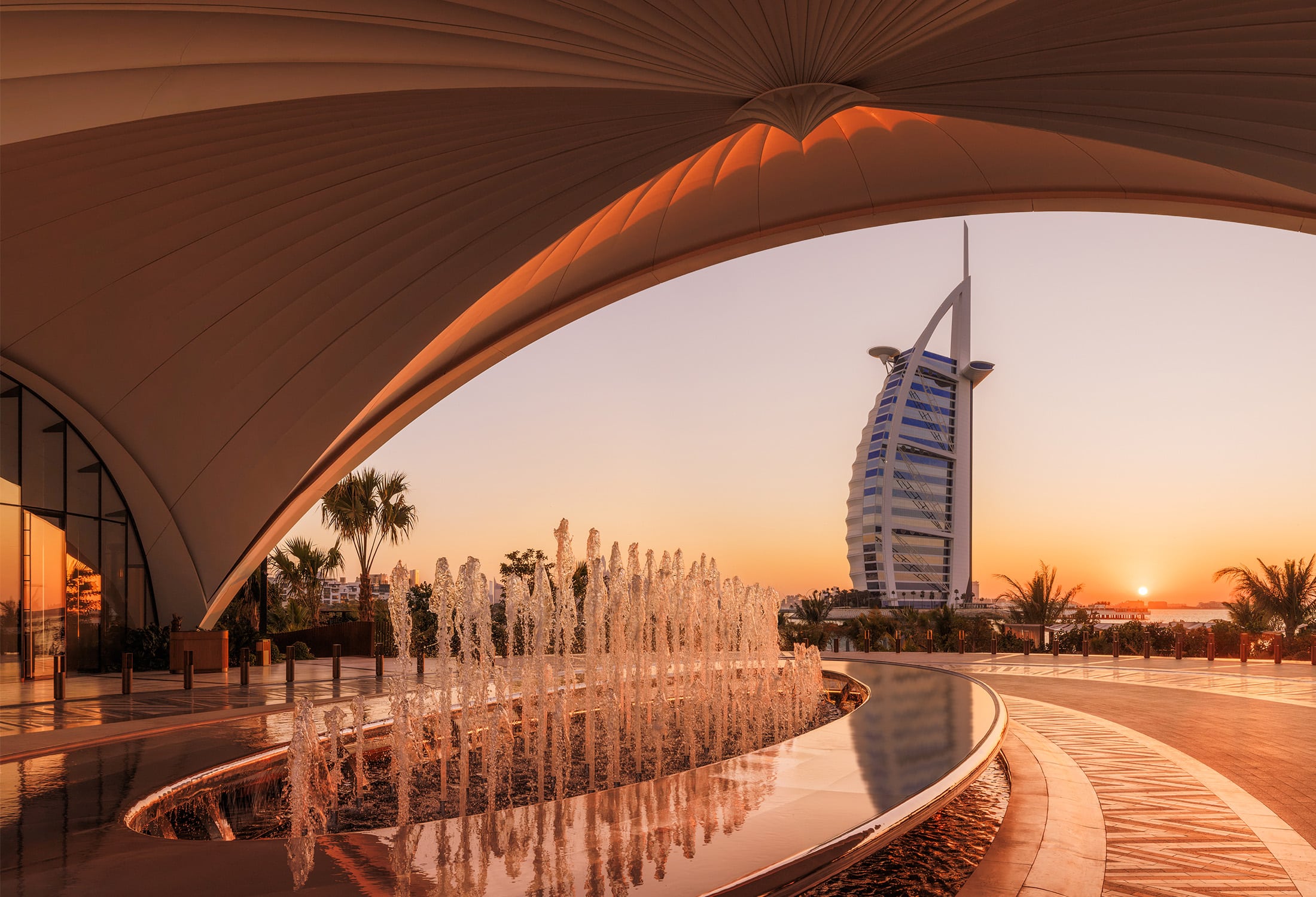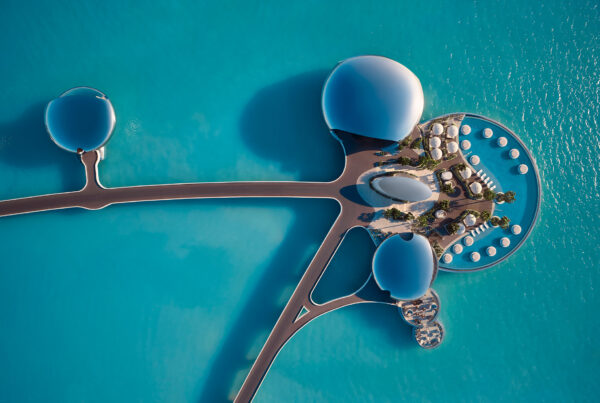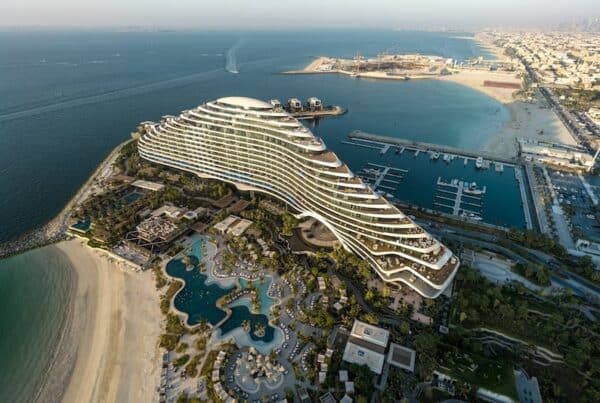Between sea and sky, Shaun Killa’s latest creation completes Jumeirah’s coastal trilogy with sculptural grace and quiet confidence.
By Shehzin Shaikh | June 2025
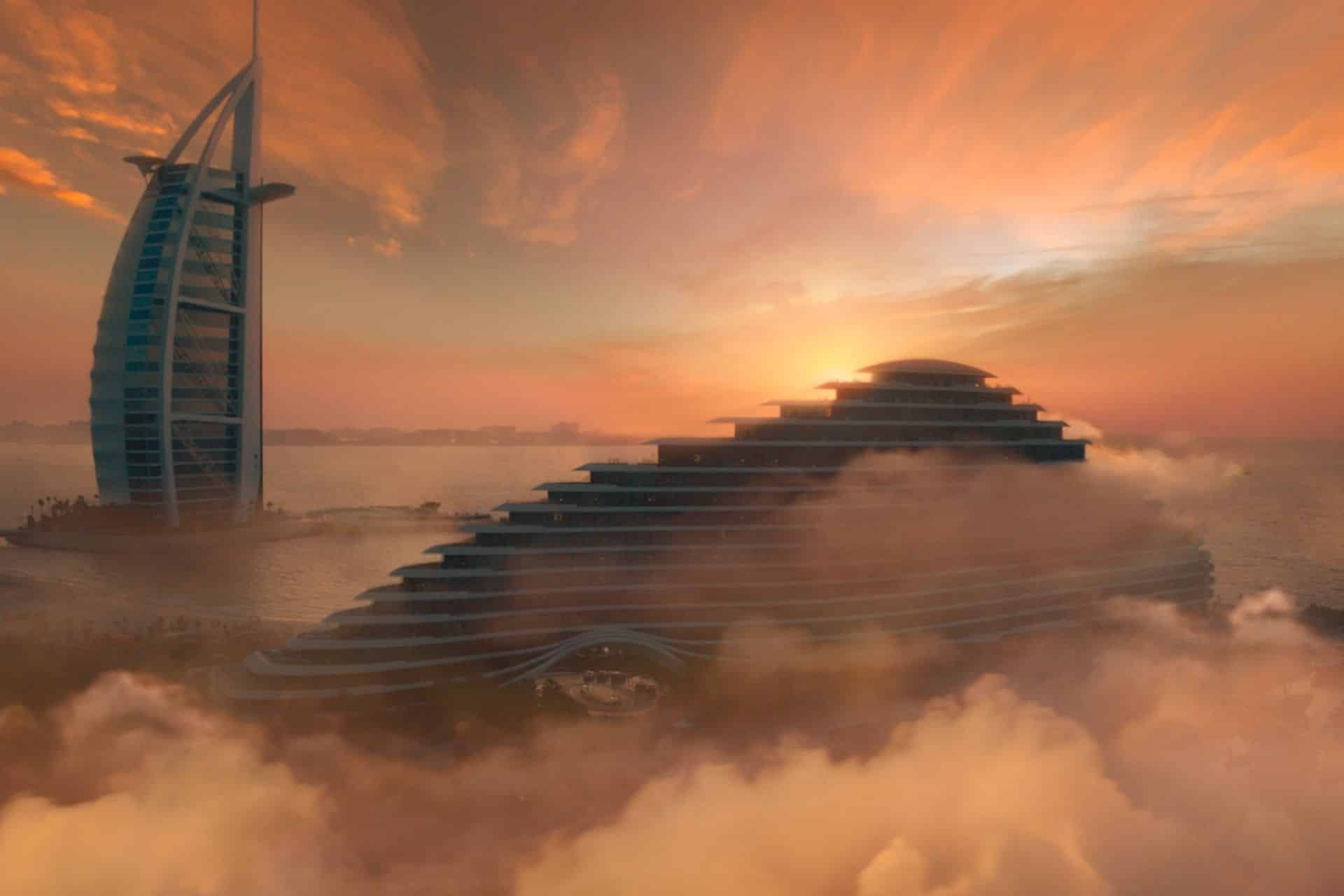
As my car curved along Jumeirah Beach Road, the sculptural form of Jumeirah Marsa Al Arab rose into view, an architectural flourish that gleamed like the bow of a superyacht anchored in Dubai’s coastline.
The resort, nestled between the iconic Burj Al Arab and the Jumeirah Beach Hotel, immediately announced itself as more than just a luxury retreat. This was designed with a vision, elegant, futuristic, and connected to its nautical inspiration.
Jumeirah Marsa Al Arab is the final piece in Jumeirah’s trilogy of oceanfront icons. Designed by Shaun Killa of Killa Design, the 16-storey, 85-metre-high property stretches across 155,000 square metres and redefines what a waterfront resort can be.
Killa, who has worked with Jumeirah for 24 years, beginning with the Burj Al Arab, told me that this was a culmination of a long creative journey. “Over the years, this collaboration has evolved into a true partnership,” he explained. “What sets Jumeirah Marsa Al Arab apart is its role as both, a complement to iconic landmarks and a bold vision for the future of hospitality.”
From the moment I stepped onto the entrance deck, I was immersed in Killa’s masterstroke, a sweeping steel arch that frames the Burj Al Arab in the distance. “Unlike traditional hotels where guests are dropped off behind the building,” Killa said, “our design ensures that the moment guests arrive, they are greeted with a breathtaking view.” In the evening, the arch glows with subtle lighting beneath its fluted soffit, creating an arrival that feels more like boarding a private vessel than entering a hotel.
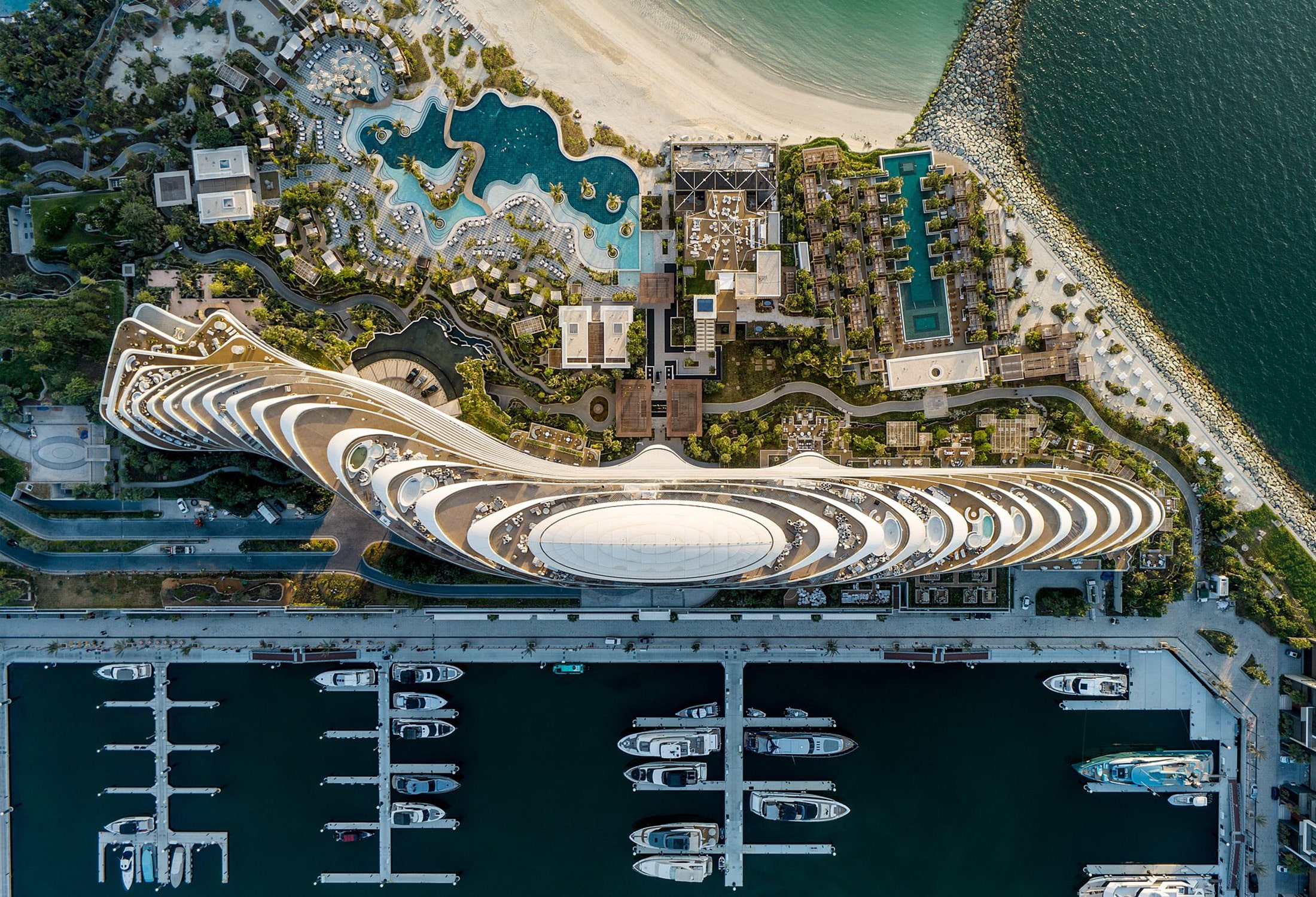
Inside, the lobby continues the maritime narrative. Its gentle curves and forward movement evoke the sensation of walking toward the bow of a yacht. “This undulating path extends through multiple bars and restaurants, each offering distinct atmospheres,” Killa said, “designed to immerse guests in a variety of sensual and visual experiences.”
The design seamlessly flows between indoor and outdoor spaces. Overlooking a two km shoreline, the resort offers two private beaches and four pools, including an adults-only option and a serene spa pool.
Terraces with sweeping 270-degree ocean views make you feel as if the sea surrounds you entirely, a deliberate effect, said Killa, “This integration of views and experiences is central to our design philosophy.”
Every room and suite, and there are 386 of them, is designed to celebrate this sense of openness. Floor-to-ceiling windows open to generous terraces, while interiors by HBA, Avroko, and LTW blend soft palettes, luxurious textures, and gentle maritime cues.
In the Royal Suite, at 664 square metres, the Arabian Gulf seemed to stretch forever. The Pearl Suite features a 460-square-metre terrace ideal for sunset gatherings. The Ocean Grand Terrace Suite curves like a ship’s prow, giving the sensation of floating above water.
Dining here is not just a meal, it’s a curated experience. The Fore combines four cuisines in one setting: Mediterranean, Indian, Asian Fusion, and Japanese. Mirabelle serves refined French Mediterranean classics, while Iliana, a Greek retreat, offers a private beach and rooftop terrace.
Rialto channels the grandeur of Venice, and Kinugawa brings contemporary Japanese elegance to the poolside. My morning ritual became a visit to the Pierre Hermé Viennoiserie, home to impossibly delicate pastries that lived up to their legendary creator.
But for those seeking restoration, it’s the Talise Spa that truly elevates the luxury. Spanning three floors, it includes a 20-metre indoor wellness pool, chromotherapy, hyperbaric oxygen therapy, cryotherapy at –85°C, and a salon by celebrity stylist Limoz Logli. The spa blends science and serenity, offering healing through design and detail.
Residential living at Jumeirah Marsa Al Arab is no less indulgent. Eighty-two branded residences offer exclusive access to all hotel amenities, while the Marsa Al Arab Marina can berth yachts up to 61 metres. I toured a duplex where the private pool overlooked a moored superyacht, a lifestyle of seamless luxury, sea to sky.
Sustainability is deeply embedded in the architecture. Continuous balconies provide self-shading and reduce cooling loads by up to 40%. Greywater recycling supports lush landscaping that includes over 3,100 palm trees and 260,000 shrubs.
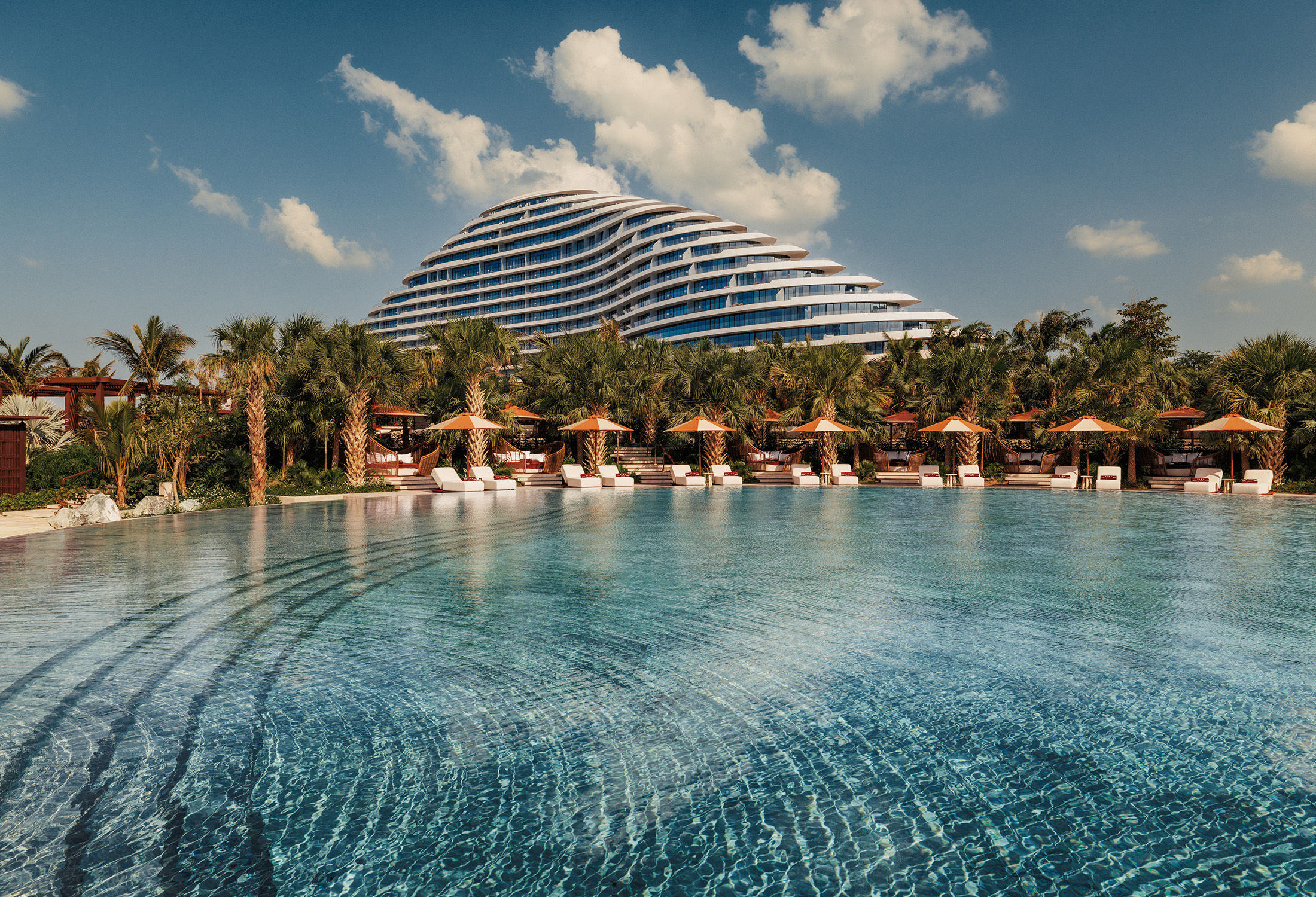
The resort is free of single-use plastics and employs low-energy systems and green roofs to reduce environmental impact. “These measures reflect our commitment to creating architecture that is environmentally conscious without compromising on luxury,” Killa noted. Of course, no visionary project is without challenges.
Killa highlighted the structural complexities of engineering the grand arch, which spans 36 metres and supports nine floors, and the cantilevered quay wall villas hovering over the sea. “These challenges pushed us to redefine possibilities,” he said, “resulting in solutions that are as bold as they are seamless.”
As we wrapped our conversation, I asked Killa how he sees the future of luxury hospitality. He gestured to the sweeping landscape before us, terraces spilling into gardens, pools disappearing into horizon lines. “Guests can expect an experience where architecture, nature and service converge to create something beautiful,” he said. “Jumeirah Marsa Al Arab is a resort that redefines hospitality, it’s a place where every detail tells a story.”
And as I looked out across the water, past the iconic Burj Al Arab and into the shimmering dusk, I knew I had just experienced the final chapter of a design trilogy, one that pushes beyond architecture and into art.
